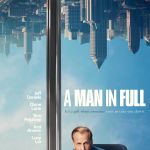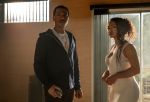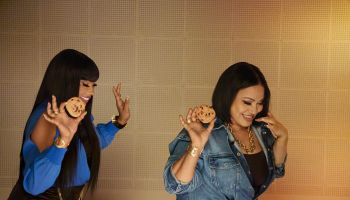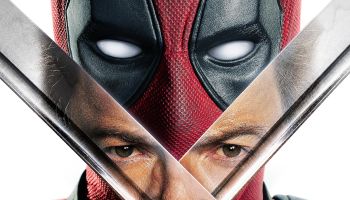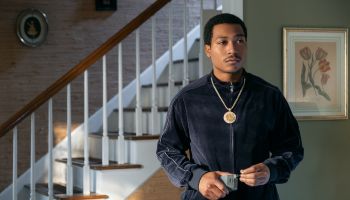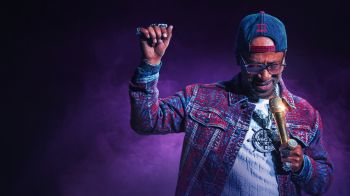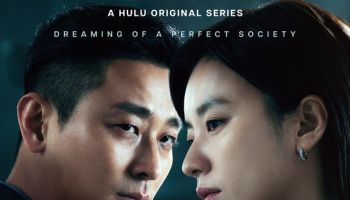Laurieann Gibson, choreographer and creative arm to one of pop’s biggest acts, comes off as high-level intense when appearing on her new E! reality show “Dance Scene,” but the Toronto-bred dancer is nothing but calm and zen when talking about the inspiration behind her latest proect, Lady Gaga‘s “Judas” video.
We caught up with the choreographer to the stars to get her feelings on working with Lady Gaga, the video’s unwanted early release and inspiration behind the visual interpretation for the “Born This Way” track. Laurieann also discusses her brief beef with Diddy after being booted off “Making the Band” in dramatic fashion.
Global Grind: What are your thoughts on the “Judas” video leak? Gaga seemed pretty mad about it.
Laurie Ann Gibson: And rightfully so, she gave E! the exclusive so I could understand why she’s so upset. I’m very proud of it as a project from the choreography and ultimately directing and collaborating with her, I’m really, really proud of it. It’s a beautiful video.
This is your third time in the director’s chair, so how was it different from the others?
It was incredibly different because it was my artist that I’ve been developing since the beginning. I’ve kind of been instrumental in directing behind the scenes a little bit of every video and so now to just really be in the chair to see it all the way through, I was really excited.
What was your inspiration for the video? People have been mentioning Federico Fellini and that it has a little bit of a Fillini-esque element to it. There is also the religious iconography to it.
The Fellini reference is an amazing idea, but I didn’t set out to do Fellini. I set out to tell a story of inspiration and have a video that could inspire people individually. Also as a director, between using the phantom with the water and playing with different speeds to effect an emotion, it’s a part of my style as a director. To fill the frame and create a world that I could find multiple angles to cover was just a dream that’s been brewing for me as a director. It just was about inspiration and the oppression that people can project and the darkness that someone may hold on to, doesn’t have to be where they stay. They can cling to the light and find whatever inspiration they need to be changed.
[pagebreak]
Unfortunately you caught some flack for the Keri Hilson “They Way You Love Me” video. Were you disappointed that people didn’t see your artistic vision?
It was really dumb because I’m thinking ‘Rihanna can do a video about S&M and Keri can’t do a competitive visual.’ It was an aggressive movement, but the song was aggressive, she was fighting for her love. We had multiple artists and multiple angles, the movement and the camera was constantly moving. With the time and the money that I had, we did a great job. We provided a six minute video and she’s just competitive in that video and I think that’s what made people uncomfortable because you’re like ‘she’s really dope,’ and they didn’t understand seeing her at that level.
Did some of that frustration carry over to the “Judas” video? Did you feel that you had more to prove?
I definitely felt like I had to prove myself. Not as a result of Keri, just from the idea and the expectation of it being Lady Gaga and if I could handle it. But it’s the ignorance that couldn’t handle it. I’ve been developing the artist from the beginning, so of course I know how to take it all the way. My frustration was in the negative opinions of others.
You described the video as “magical.” What was the most magical moment for you?
The actors! When I gave them the direction and the inspiration of what Jesus provides, true peace, joy and deliverance … Rick [Gonzalez] was just magical. He just surrendered. There was no ego and there was no idea that we could even potentially interpret. It was magical. It was a ride that was really just natural and organic. Norman Reedus is a brilliant actor and just bouncing back and forth with him was a magical experience and the riders on the bikes, I called them the freedom fighters, we were all in it. It was a time where everyone felt like they could really believe in their dreams and do what they were born to do.
We’re sure a lot of people are going to have some kind of religious judgments towards “Judas” and the religious elements. What are your thoughts on that?
I don’t know what they could potentially judge, because in the content, it in no way could be blasphemy or work opposite of the truth that has set me free. I just suggest taking a closer look and then if you still feel offended, then perhaps check out what’s going on in you.
[pagebreak]
What’s your hope for your show “The Dance Scene”? Is it to expose the lives of choreographers and dancers and show people your movement in this empire you’ve developed?
Yes. Ultimately with “The Dance Scene” ― and with the work it takes and the ability that dancers can have and transition to and the work that someone like myself is capable of doing ― the goal is to inspire, to have a platform that will undoubtedly prove to young kids and anyone that they can become who they dream of and who they want to be. Yes, it might be tough and the idea of perseverance is real, if I could make it without any money or famous last name, that I can stand as a source of inspiration and a testament that dreams are still possible and that miracles do happen.
What do you look for when you’re selecting dancers to be in your videos and performances?
When a dancer is auditioning, it’s like their desire and their passion and their gift speaks to me. There’s a certain hunger and it’s like I’ll never give up and I love to dance, more than anything, I was born to dance. It’s kind of like an inner connection and it talks to me. I love a fearless dancer and also confidant and those are the type of dancers that I attract and like to pick.
You’ve come full circle in the reality TV circuit because many people watched you on “Making the Band” and it’s interesting to see how you career has grown from then. Can you give us a little taste and how’d you get your start in this industry?
I was born and raised in Toronto and I took a Greyhound bus to New York when I was just 17 and I studied at Alvin Ailey. It was definitely a tough ride and I waitressed late at night from 12 o’clock at night to six in the morning and then I’d go to my ballet class. It was very difficult. I slept on floors, but it was always my gift just pushing me, pushing me, pushing me. And God’s grace and mercy was covering me, covering me, covering me. And my mom always told me if you just do the work then you’ll be all right, so I always kept that in the back of my brain. After being at Ailey’s, I then went to a Mary J. Blige audition and at Uptown Records it was like, ‘Oh my God, they’re paying me more.’ I would love to stay on my toes and in the modern dance world but I think I need a bit more of a check. So then I got into hip-hop and Puff and Mary and Biggie and Missy, and the world of soul and I just loved it so much. Then I began to craft out my voice as a choreographer.
[pagebreak]
For most people you’ve hit the jackpot having the vision to stick with and work with Gaga and now to be the Creative Director. How did that come about?
I have worked with many artists prior. Vincent [Gaga’s management] called me and said, ‘I have this artist and she needs developing, and she has this hunger and the eye of the tiger and everything that you like.’ And he said, ‘I really believe that you could ultimately throw yourself into this project and do whatever you like do to ’cause I know your frustrated with not being able to be creatively free.’ It was right after the “Making The Band” disappointment with Puff, so I just threw myself into it and from day one developed everything that has been seen.
What’s your relationship been like with Puff since that moment that we all saw on reality TV?
It was very difficult because it was like my brother … In the position he was in and the power that he had to make a move that could have potentially taken me out. I didn’t have money. I didn’t have relationships, and I didn’t have a manager, so it was tough. I just fought back as hard as I could and because I was talented I just believed in my gift, I was able to continue to produce. In a way, it couldn’t stop me and what I wanted to do, but now we’re the best of friends. I love him and I always have. It was just a bad bump in the road. He called me when “The Dance Scene” aired and he was like ‘I’m so proud of you, it’s such a good show.’ I’m like ‘Boooo yaaaa.’ No [laughs], we’re the best of friends and he’s family. He exposed me to things without really talking, hoping the entire time I was watching and learning, and I was, so we have a great relationship.
Can we expect to see you directing anymore of the “Born This Way” videos, or has that been discussed yet?
Yes, absolutely. We talked about the next single. She was so happy with the process and the freedom and the ability that I have to direct the entire vision. She was just so pleased with the execution of what I did that she’s like, ‘OK, I want us to do the next one.’ I’m like ‘OK, little muffin. I just need to breathe for five minutes.’ The HBO special I directed on my own. It’s really phenomenal. There were 17 cameras and you go backstage and it’s gonna be a really good ride.
What’s next for you?
“The Dance Scene” … hopefully season two. I’m gonna go sit outside [Ryan Seacreast’s] door right now as soon as I hang up this phone.




